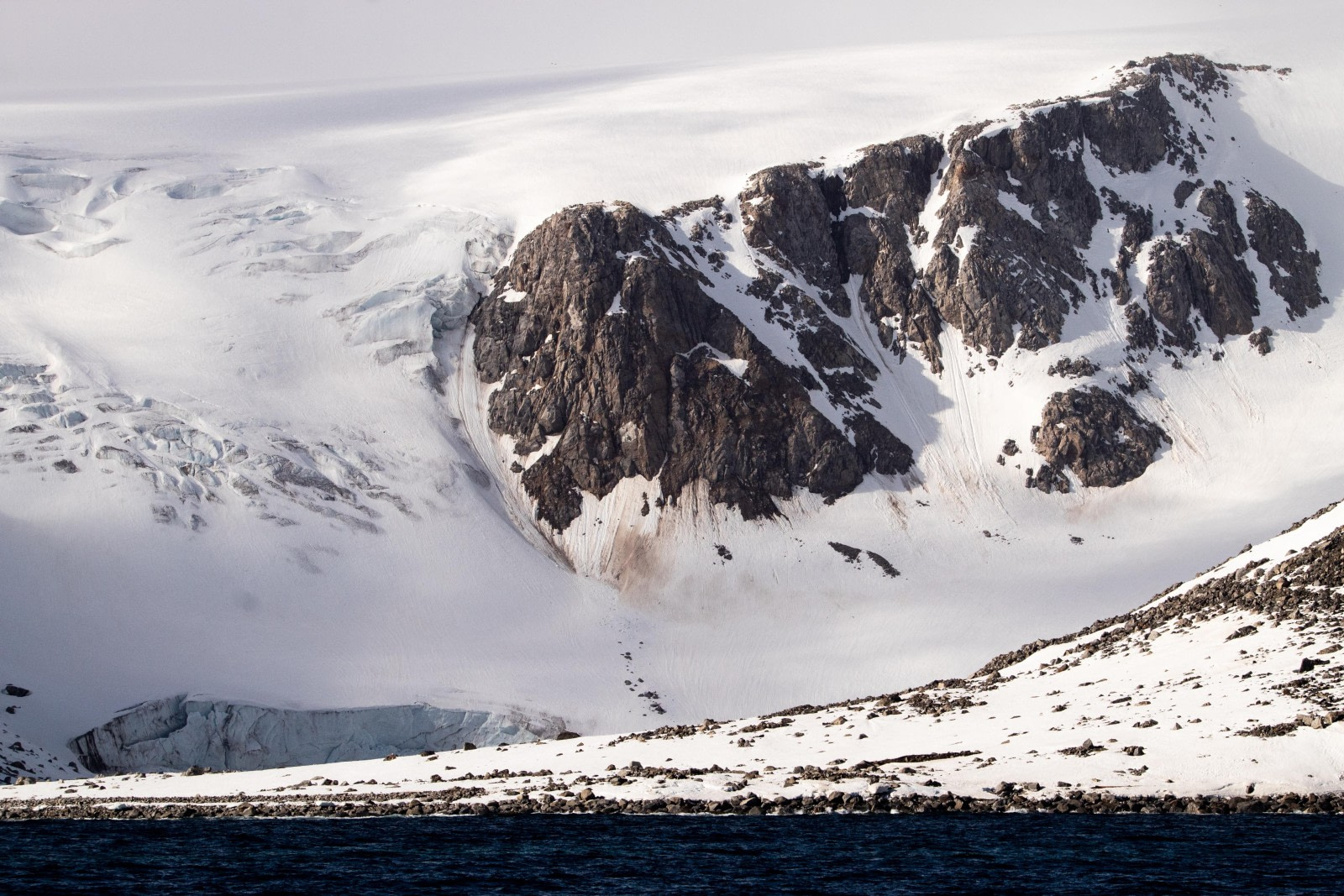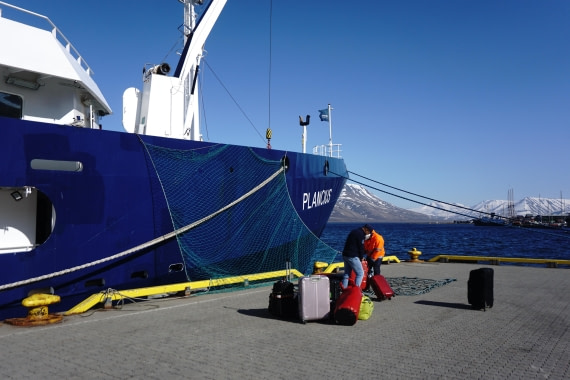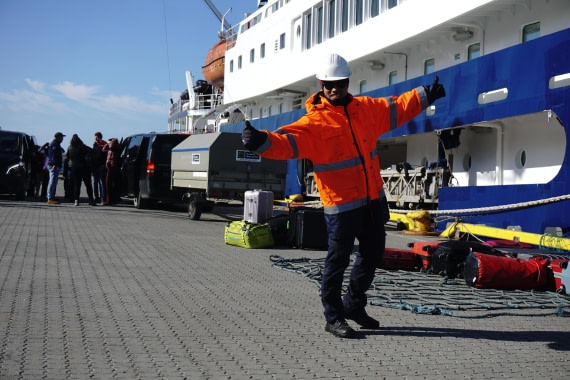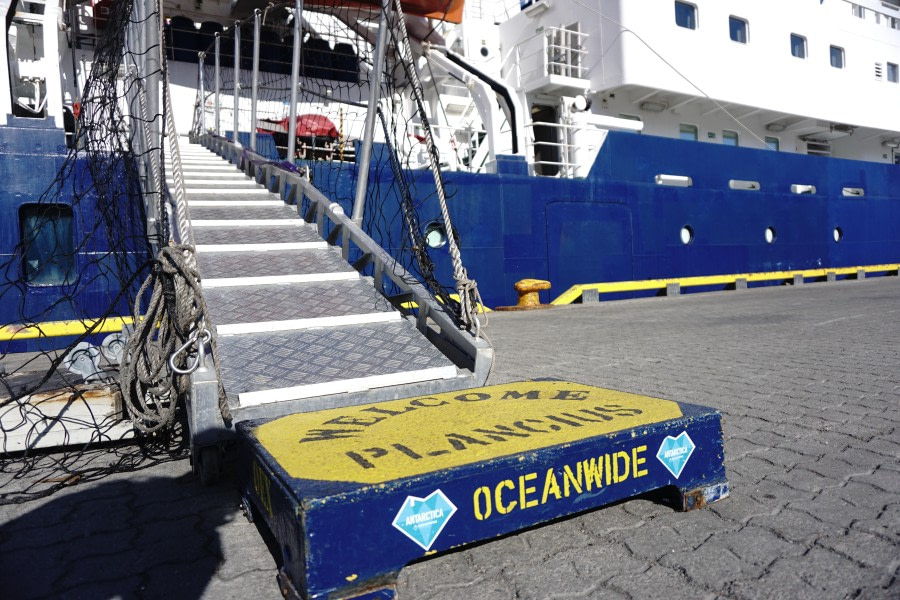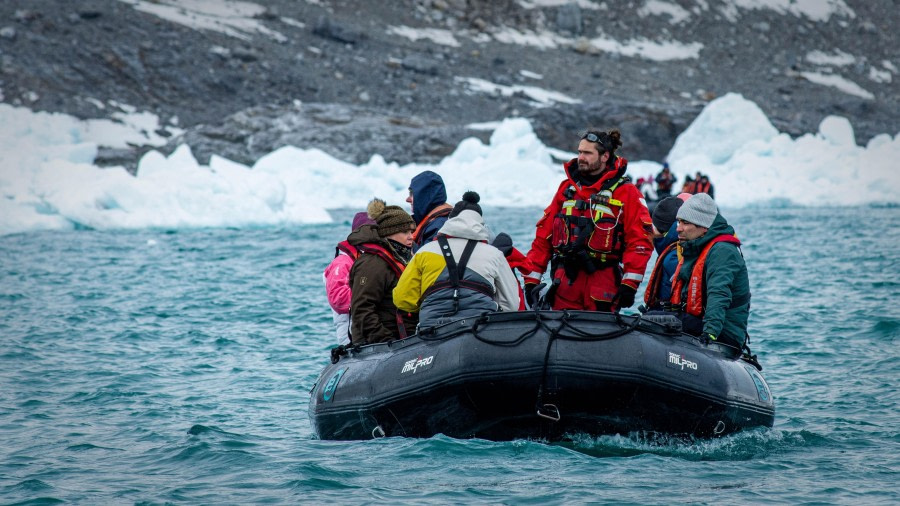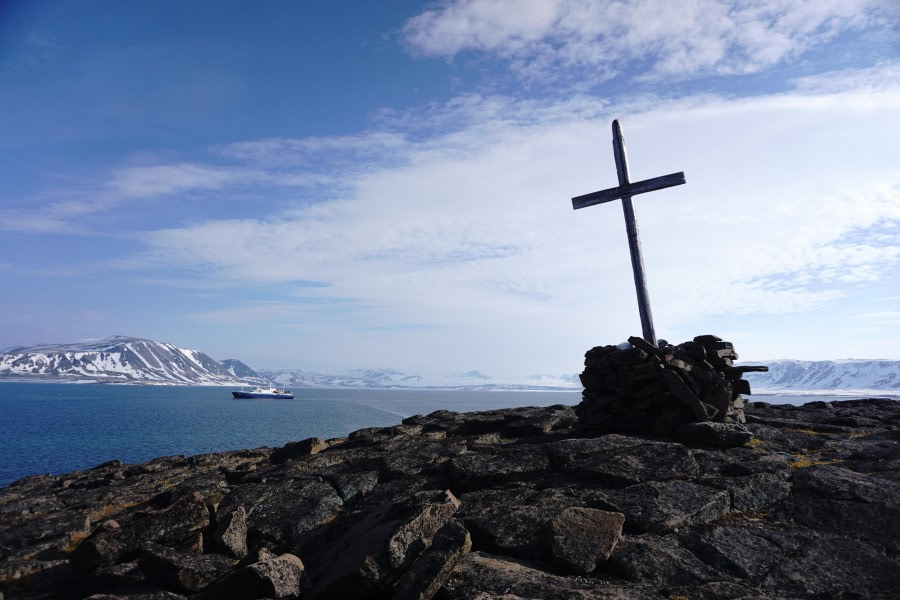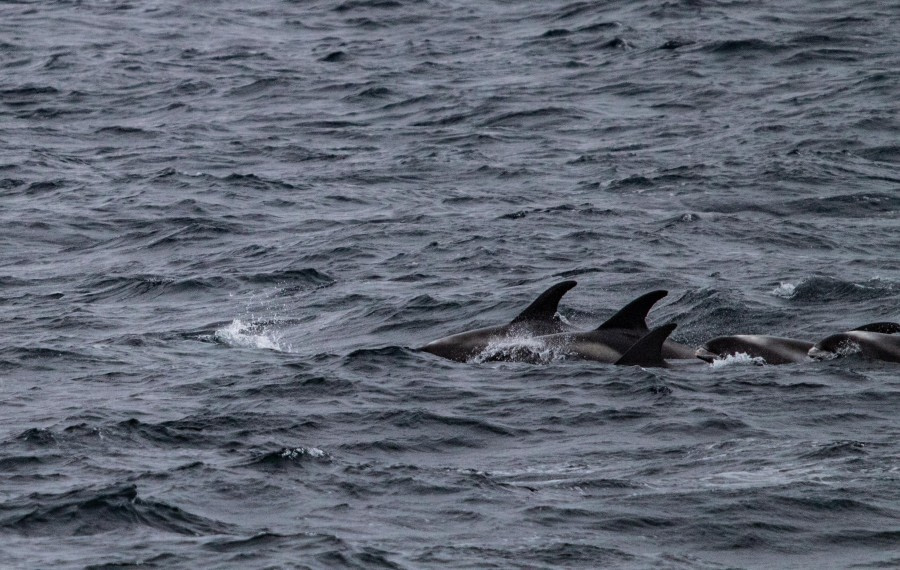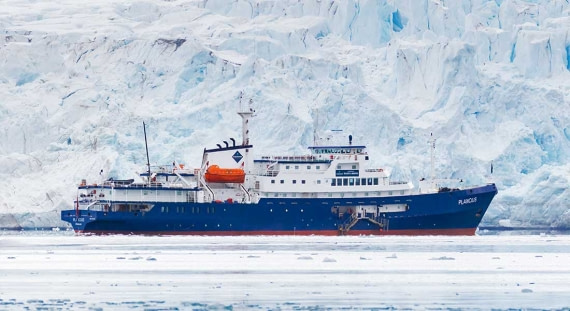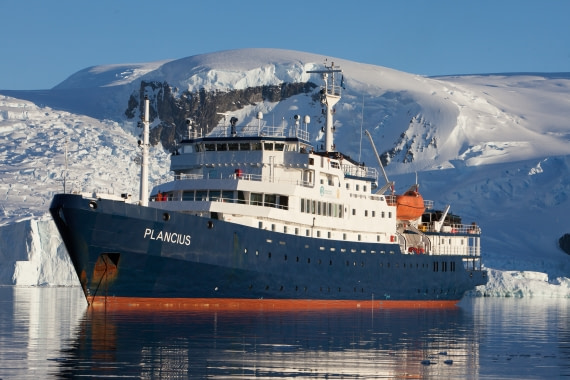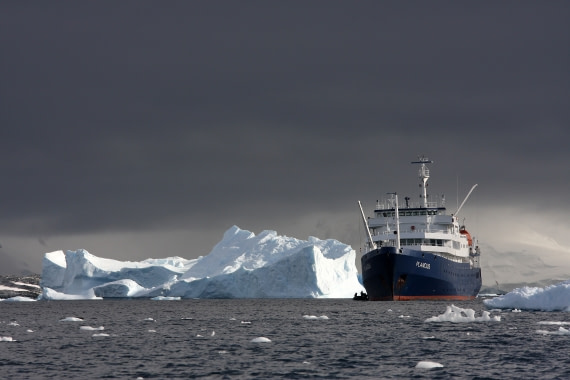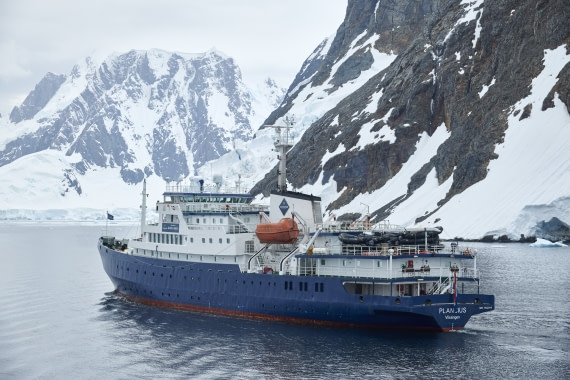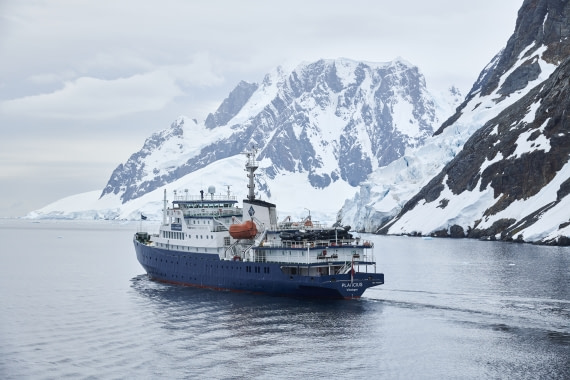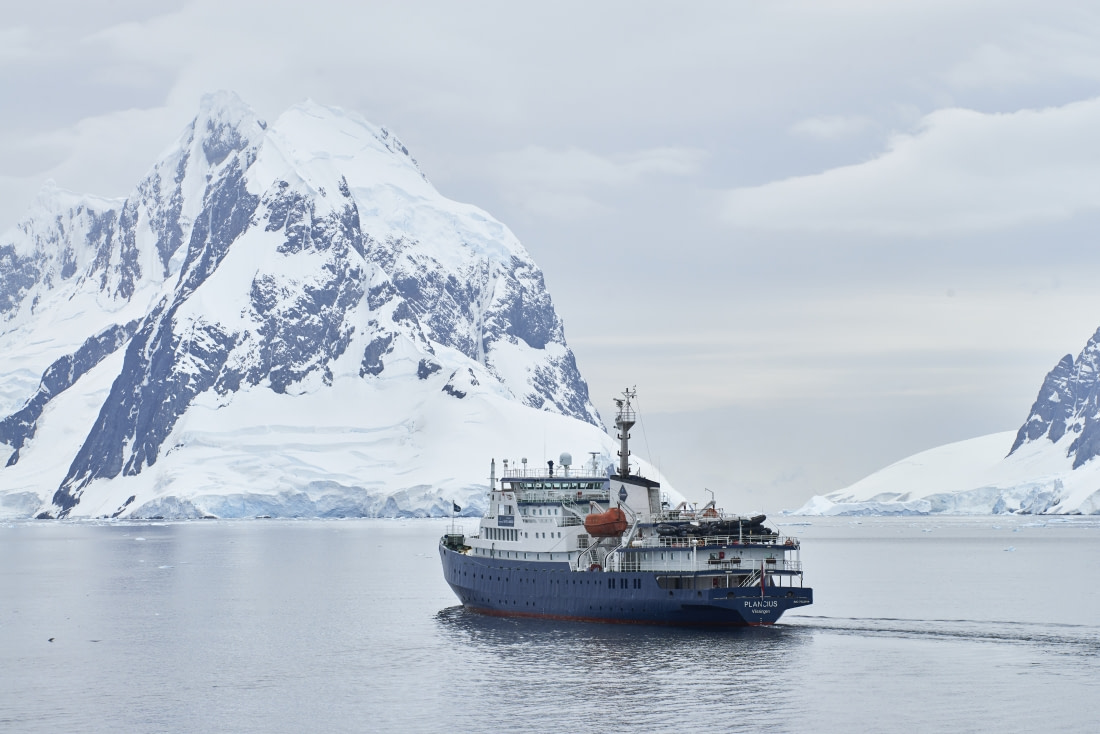| Datum: |
08.06.2024 |
| Position: |
79°36.5'N / 012°43.1'E |
| Wind: |
N 2 |
| Wetter: |
Bedeckt |
| Lufttemperatur: |
-1 |
Liefdefjorden - der Fjord der Liebe - so lautet der Name dieses Fjordes aus dem Niederländischen übersetzt. Die Plancius fuhr am frühen Morgen hinein und bewegte sich langsam auf unseren morgendlichen Landeplatz zu, der einen noch seltsameren Namen trägt - Texas Bar. Texas ist Zehntausende von Kilometern von hier entfernt, und die nächstgelegene Bar ist mehr als hundert Kilometer in gerader Linie entfernt. Worin liegt das Geheimnis? Es liegt in der Tatsache begründet, dass es am Ufer eine kleine Hütte gibt, die von den Einheimischen auf ihren Jagdausflügen als Basislager genutzt wird, aber auch einfach nur als Ort zum Ausruhen. An der Wand der Hütte prangt die Aufschrift Texas Bar", und im Inneren stehen auf einem Regal eine Reihe leerer Flaschen mit starkem Alkohol.
Unsere Reiseleiter sind viel früher als wir an der Küste gelandet. Da die Gefahr, einem Eisbären zu begegnen, allgegenwärtig ist, ist eine gründliche Erkundung erforderlich, um sicherzustellen, dass sich keine pelzigen Raubtiere in der Nähe befinden. Die mit Ferngläsern bewaffneten Guides fuhren mit ihren Zodiacs am Ufer entlang und untersuchten die Küstenlinie und die verschiedenen Falten des Geländes. Als sie dann bereits am Ufer waren, erkundeten sie einige verdächtige Ecken und gaben, nachdem sie sich vergewissert hatten, dass alles ruhig war, grünes Licht für uns, um sich ihnen anzuschließen.
Wir sollten in der Nähe der Gangway auf das Einsteigen in das Zodiac warten. Unsere reizende Ärztin Annelou organisierte den gesamten Ablauf, so dass Gruppen von zehn Personen die Gangway hinuntergehen und ihre Plätze in den Booten einnehmen konnten. Außerdem vergewisserte sie sich, dass unsere Schwimmwesten richtig angelegt und befestigt waren.
Zwei Minuten rasante Fahrt - und schon sind wir am Ufer! Als Erstes mussten wir die Schwimmwesten ausziehen und in große weiße Säcke packen. Neben den Taschen mit den Schwimmwesten lagen Gewehrkoffer. Es wäre sehr interessant gewesen, wenigstens in einen von ihnen hineinzuschnuppern, aber das war streng verboten. Außerdem waren die Gewehre bereits geladen und hingen bei den Führern auf den Schultern.
Wir teilten uns nach unseren Interessen in Gruppen auf. Diejenigen, die einen gemütlichen Spaziergang entlang des Ufers machen wollten, mit der Möglichkeit, Fotos zu machen, schlossen sich der Gruppe der gemütlichen Wanderer an. Diejenigen, die etwas weiter gehen, aber ihre Ausdauer nicht auf die Probe stellen wollten, schlossen sich der Gruppe der mittelschweren Wanderer an, und diejenigen, die höher steigen und weiter gehen wollten, bildeten die Gruppe der langen Wanderer. Als wir alle bereit für eine Wanderung waren, ging jede Gruppe ihren eigenen Weg.
Das Wetter war recht günstig. Es war kühl, aber nicht kalt. Es wehte ein frischer Wind, aber nicht stark genug, um durch unsere Kleidung zu dringen. Der Himmel war bewölkt, was ein weiches Licht erzeugte und die Möglichkeit bot, gute Fotos zu machen. Dennoch tauchten ab und zu blaue Flecken in den Wolken auf, und die Sonnenstrahlen brachen freudig durch sie hindurch auf den Boden und erfreuten uns mit hellem Licht.
Der alte, matschige Schnee war stellenweise mit Spuren von Wildtieren übersät. Man konnte die Spuren von Rentieren, Polarfüchsen, Vögeln und sogar, in einiger Entfernung, die riesigen Pfotenabdrücke eines Eisbären sehen. Der Schnee schmolz schnell, und überall flossen zahlreiche Bäche die Hänge hinunter.
Wo sich der Boden bereits von der Schneedecke befreit hatte, waren kleine violette Blütentrauben zu sehen - der violette Steinbrech, die allererste Blüte, die den späten spitzbergenischen Frühling ankündigt. Winzige violette Blütenblätter öffneten sich und saugten begierig das kalte Sonnenlicht des Nordens auf. Schließlich haben diese und andere Spitzbergen-Pflanzen nur so wenig Zeit. Während des kurzen Sommers müssen sie blühen und Früchte tragen, und sobald der Schnee schmilzt, verlieren die Pflanzen keine Zeit. Sobald der Schnee schmilzt, verlieren die Pflanzen keine Zeit. Im September fällt dann wieder Schnee, und sie können bis Juni schlafen.
Die hohe Klippe, die sich über das Ufer erhebt, diente vielen Vögeln als Heimat. Von Zeit zu Zeit hörte man das Schnattern von Nonnengänsen und Kurzschnabelgänsen. Sie waren gerade erst angekommen und huschten nun hin und her, landeten gelegentlich, um sich am Gras des letzten Jahres zu laben und Moos in ihren Schnäbeln zu sammeln, um damit später ihre Nester auszukleiden. Auch die Brunnich's Guillemots, die den Pinguinen so ähnlich sind, flogen hin und her. Irgendwo hoch oben heulte eine Eismöwe - ein lästiger Räuber - klagend auf. Und in der Ferne schnatterten Dreizehenmöwen - fröhliche Möwen, die gerne auf senkrechten Klippen nisten.
Wir schlängelten uns zwischen großen Felsbrocken hindurch, überquerten Schneefelder und suchten uns einen Platz mit schöner Aussicht, um die nördliche Natur zu betrachten.
Wir fanden auch Zeit, einen Blick in die Jagdhütte mit dem Schild Texas Bar" zu werfen: spartanische Verhältnisse, Etagenbetten und eine Minimalausstattung an Küchenutensilien. Auf jeden Fall ist es besser als ein Zeltaufenthalt. Hier kommt kein Bär rein, man kann den Herd anzünden, und der Wind bläst nicht durch. Ein Gästebuch lag auf dem Tisch. Einige von uns trugen sich darin ein.
Doch die Zeit für unsere Landung neigte sich allmählich dem Ende zu. Wir kehrten ans Ufer zurück und legten unsere Schwimmwesten wieder an. Auf Wiedersehen, "Texas Bar"!
Während wir zu Mittag aßen, bewegte sich unser Schiff Plancius zum anderen Ende des Liefdefjorden und hielt in der Nähe des Monaco-Gletschers. Nach dem Mittagessen, so der Plan, sollte eine Zodiacfahrt entlang dieses Gletschers stattfinden. Während wir uns warm anzogen, setzten unsere Führer die Zodiacs ins Wasser.
Ob der Wind zugenommen hatte, die Nähe des Gletschers eine Rolle spielte oder weil man sich im Zodiac sitzend nicht viel bewegt, es schien hier deutlich kälter zu sein. Wir bewegten uns langsam an der Vorderseite des Gletschers entlang und betrachteten die riesigen, stellenweise rissigen Eismassen. Hier und da konnte man Bartrobben sehen, die sich auf Eisschollen ausruhten. Leider waren sie ziemlich weit weg, aber mit dem Fernglas konnte man sie gut sehen. Dreizehenmöwen und Küstenseeschwalben, die sich einige Eisschollen ausgesucht hatten, drehten ihre Köpfe und beobachteten uns. Auch die Seeschwalben zwitscherten bedrohlich.
Nach etwa zwei Stunden kehrten wir durchgefroren, aber zufrieden, zum Schiff zurück. Am Abend versammelte Jan, unser Expeditionsleiter, uns alle in der großen Lounge und erzählte uns von den Plänen für den nächsten Tag, der nicht weniger interessant zu werden versprach! Mal sehen, was er uns bringt.
